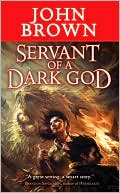Key Conditions for Suspense:
Part 20 – Patterns for Presenting the Problem 1-3
by John D. Brown
 The following is part of a continuing series. If you wish to start at the beginning, head to It’s All About The Reader.
The following is part of a continuing series. If you wish to start at the beginning, head to It’s All About The Reader.
In my last two posts I talked about looking for plot/structure patterns. I’ll start now with patterns for presenting the problem.
The story begins when we present to the reader (a) the main character, (b) the problem she’ll face, and (c) a good reason why the character can’t or won’t walk away from the problem. If the main character is sympathetic and interesting, the reader will root for her and want to see what happens. If some of the particularities of the character and problem are surprising to the readers, it will generate more interest than if it’s something they’ve seen many times before.
Here are some elements to think about when you structure the event sequence of the presentation phase.
- Number of scenes to present the problem
- Straight or twist presentation
- Central problem or a subplot problem start
- The reason why the hero can’t or won’t walk away
- Size of the presentation phase (proportion)
In this post, I’ll briefly discuss some options for the first three elements.
Number of scenes to present the problem
We can present the problem in one scene or over the course of a couple of scenes.
For example, in Suzanne Collins’ Hunger Games, the problem is presented in one scene. Katniss goes to reaping day event, witnesses her little sister’s name drawn, volunteers to take her place, and then sees the boy she’s going to have to kill.
In Dean Koontz’s The Good Guy the problem is presented in two scenes. In the first scene a guy shows up and mistakes our hero for a contract killer. He passes the hero an envelope with $10,000 and a picture of the woman he wants killed with the address on the back. In the next scene, just a few minutes later, the killer shows up and mistakes our hero for the guy putting out the hit. We know very quickly what the whole story is going to be about.
Sometimes it takes quite a number of scenes to present the central problem. For example, in Kathryn Stockett’s The Help the problem takes nine chapters to fully reveal itself. We start off immediately with three interesting women in different hardship situations. That alone builds our sympathy and invests us in them. But it’s not until the end of chapter nine that we finally know the specific issue that will form the central question of the story.
Sometimes it takes so long because we’re presenting a string of events that lead in a causal manner to the main problem. For example, in Larry Correia’s Monster Hunter International, we start with a scene where a fat boss turns into a werewolf and tries to kill the hero. This attack sends the hero to the hospital. But it also prompts MHI to offer the hero a job hunting monsters. The offer leads to his acceptance, which leads to some training scenes, which leads, at last, to the central story problem being introduced in chapter six.
How many scenes will it take to present the problem of your current project?
Straight or twist presentation
How we reveal the nature of the problem is another option in the presentation phase. We can present the problem clearly up front. Or we can start with one understanding of the problem, then, as the character gets to work on it, we present another scene that opens our eyes to the real nature of the issue.
The problems in Hunger Games and The Good Guy are straight presentations. We start knowing exactly what’s up.
On the other hand, we could start with two murders. The detective thinks it’s the work of some crime organization. Then he discovers the two victims both have a peculiar tattoo. One that was found on another dead man who was a soldier that worked on some super-secret Army biological weapon project. He comes to find out that all three men were on that project and the murders were made to look like something they weren’t. Then we learn it was a humanitarian project. Twist!
Will you present it straight or with a twist? Both are excellent ways to begin.
Central problem or a subplot problem start
Another option is to lead with the central problem, or to lead with something else, maybe the introduction of a subplot or something about the character that will engender interest and sympathy.
In Lee Child’s Gone Tomorrow, the first page starts with the presentation of the central problem of the story. A woman with high-level access kills herself–why? Brandon Sanderson’s Elantris starts with the central problem as well—the hero has been cursed. And the rest of the novel is about whether or not he can reverse that curse.
However, in The Good Guy, we start the book with banter back and forth between the hero and a bartender friend about the hero’s lack of a love life. It’s funny and interesting and actually sets up the subplot of the book, which is a love story. But it isn’t the central plot issue. That comes in the next scene when the hero is slipped the photo and money for the hit.
Likewise, in Spiderman 2 we start with Peter Parker having issues trying to keep a job, do well in school, and win the love of his life. This subplot directly impacts the central story problem. But the central story problem of Doctor Octopus doesn’t show up until a few scenes later.
In Hunger Games we open with a short introductory scene that presents the character and builds interest in her. It also introduces a love element. After that brief presentation, we move directly into the presentation of the central story problem.
Have you thought about starting with a bang right away? Or does your story want another hook before you roll the main one out on the stage?
Remember: options, not formulas.
I’ll end here in this post. In the next I’ll talk about patterns for the last two elements of the presentation phase.
Happiness,
John
•••
 John Brown is an award-winning novelist and short story writer. Servant of a Dark God, the first book in his epic fantasy series, was published by Tor Books and is now out in paperback. Forthcoming novels in the series include Curse of a Dark God and Dark God’s Glory. He currently lives with his wife and four daughters in the hinterlands of Utah where one encounters much fresh air, many good-hearted ranchers, and an occasional wolf.
John Brown is an award-winning novelist and short story writer. Servant of a Dark God, the first book in his epic fantasy series, was published by Tor Books and is now out in paperback. Forthcoming novels in the series include Curse of a Dark God and Dark God’s Glory. He currently lives with his wife and four daughters in the hinterlands of Utah where one encounters much fresh air, many good-hearted ranchers, and an occasional wolf.
For a list of all of the posts in this series thus far, click on the “John D. Brown” tag.


